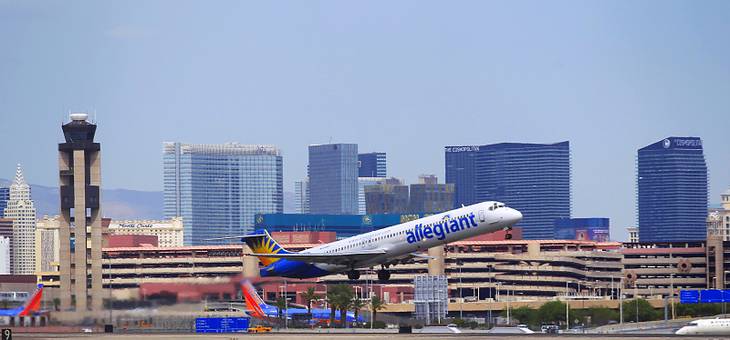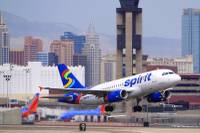More coverage
A company that monitors special airline fees says Las Vegas-based Allegiant Air generated 27 percent of its revenue from ancillary sources, the third-highest percentage among 50 airlines worldwide.
Miramar, Fla.-based Spirit Airlines, which was McCarran International Airport’s fastest-growing air carrier in 2011, had the highest ancillary revenue as a percentage of total revenue with 33.2 percent.
Allegiant had the highest percentage among 47 airlines in 2010 at 29.2 percent.
The Amadeus Review of Ancillary Revenue Results for 2011 was issued Monday by Wisconsin-based IdeaWorksCompany, which tracks ancillary revenue with Spanish travel technology partner Amadeus.
Spirit generated $355.6 million in ancillary revenue in 2011, and Allegiant, $210 million. A spokesman for IdeaWorks did not say where those dollar amounts ranked among the 50 airlines, but they weren’t in the top 10. A detailed 70-page report ranking the 50 airlines is expected to be released later in the summer.
The top five ancillary revenue airlines in 2011 were United Continental ($5.17 billion), Delta ($2.53 billion), American ($2.11 billion), Qantas Airways ($1.41 billion) and Southwest ($1.18 billion).
“We’ve seen the industry move swiftly to grasp some clear opportunities for providing ancillary services, such as baggage fees, extra legroom and on-board catering,” said Holger Taubmann, senior vice president of distribution at Amadeus.
Amadeus and IdeaWorks researched financial filings of 108 airlines, but only 50 of them break out ancillary revenue. In 2011, 50 airlines reported that passengers paid $22.6 billion in extra fees compared with $21.4 billion to 47 airlines in 2010 and $13.5 billion to 47 airlines in 2009.
Once primarily the domain of low-fare airlines, special fees are now charged by large carriers to keep up with rising fuel and labor costs. Many of the fees are for commission-based services, such as hotel or car-rental bookings, while others include co-branded credit cards, loyalty programs and other amenities.
The Amadeus report also ranked ancillary revenue per passenger, and Allegiant fell one position to No. 6 in 2011, but revenue per passenger climbed to $34 from $32.86. Spirit jumped from sixth to second, from $25.16 per passenger to $41.75.
Southwest, which has more daily flights than any other airline at McCarran, broke into the top 10 by revenue for the first time since first appearing on the list in 2009. Southwest markets itself as an airline that doesn’t charge extra for bags, but it generated $1.18 billion with convenience-adding services like EarlyBird, a $10 fee that enables passengers to get a priority position for check-in, or Business Select, which offers priority airport screening, early boarding and a welcome cocktail.
The Amadeus report also listed new ancillary fees airlines are trying.
AirAsia’s new Red Carpet service gives passengers fast-track security checks, access to passenger lounges, early boarding and a ride to the plane on an electric cart for $25. Qantas sells a special bag tag with wireless technology that links a traveler’s booking, permitting self-checking on flights within Australia for $47. Spanish airline Vueling will hold a middle seat empty, board a passenger early and provide a drink and snack for $73.
Airline consumer groups have asked the U.S. Department of Transportation to hold airlines more accountable for the fees they charge.
In a keynote speech at the Global Business Travel Association annual convention in Boston on Monday, the organization’s executive director, Michael McCormick, endorsed the need for transparency on ancillary services and fees.
“The GBTA fully supports the free-market right of businesses to create and follow their own chosen business models, including charging ancillary fees,” McCormick said. “But travel professionals must be presented with an accurate view of the full cost of products. To that end, it is imperative that there is full transparency to buyers on fares and fees. This also applies to booking, ticketing, billing and fulfilling those services.”

